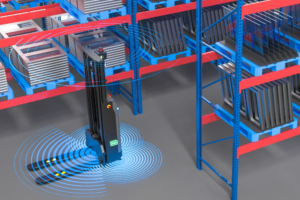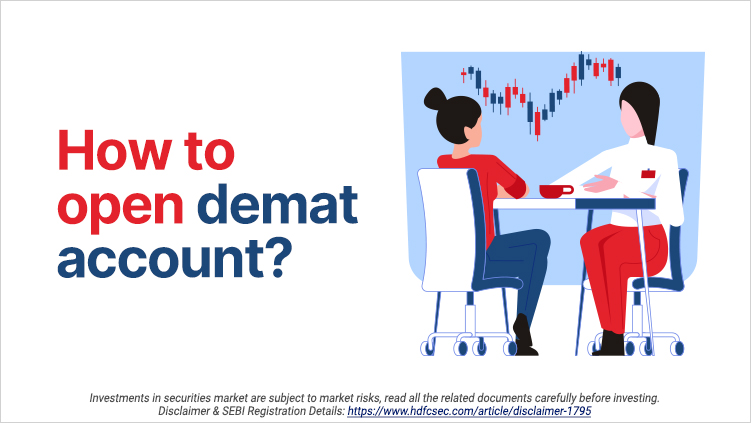If you’re thinking about investing in the financial market, the first thing you’ll need is a demat account Today, it works like an entry pass, allowing you access to the stock market.
Since the COVID-19 pandemic, many people have been exploring different ways to invest, and the appeal of investing in stocks, trading, and Systematic Investment Plans (SIPs) has grown significantly.
A demat account is quite similar to a bank account, but instead of holding money, it stores your stocks in a digital format. This is a shift from the earlier practice where stocks were held as physical paper certificates.
In this blog, let’s break down what a demat account is and go over the simple steps to open one.
What is a Demat Account?
Introduced in India in 1996, a Demat Account, also known as a Dematerialised Account, lets you hold shares and securities in electronic form. With a demat account, you can store dematerialised assets like bonds, stocks, mutual funds, and exchange-traded funds (ETFs).
As per the Securities and Exchange Board of India (SEBI), having a demat account is compulsory for trading in financial securities. As of March 2024, the total number of demat accounts in India has reached 15.1 crores.
The best trading platform provides users with intuitive tools, real-time data, and robust security to facilitate efficient and informed trading decisions.
How Does a Demat Account Work?
A demat account can only be opened through a Depository Participant (DP). The DP acts as a link between you and the depository. In India, there are only two registered depositories: National Securities Depository Limited (NSDL) and Central Depository Services (India) Limited (CDSL).
Once the required paperwork is completed, you can open free Demat Account online with the DP. After that, if you have physical share certificates, you can transfer them to your demat account. The shares will be dematerialised, meaning they’ll be stored electronically in your demat account. You can then buy or sell shares, mutual funds, and other securities. Once the trading is done, the shares will be credited or debited to your demat account.
How to Open a Demat Account?
Here are the simple steps to follow when opening a demat account:
- First, find a DP that provides demat accounts. This service is usually available through banks, stockbrokers, or financial institutions.
- After selecting a DP, you will need to fill out an application form and submit it with the required documents. These include identity and address verification documents such as utility bills, voter ID, passport, or driver’s license.
- You may also need to provide additional documents, including your PAN card, bank details, and a cancelled cheque.
- Once the DP verifies your documents and approves the account, your demat account will be activated.
Documents Required to Open a Demat Account
Following are the documents required to open a demat account:
- Identity Verification: You can verify your identity using an Aadhaar card, PAN card, driving licence, or voter ID.
- Proof of Address: Documents like Aadhaar card, driving licence, voter ID, passport, or utility bills can be used to confirm your address.
- Cancelled Cheque: This is needed to connect your bank account to your demat account.
- Photographs: Provide two recent passport-sized photographs.
- Signature Verification: Documents such as a PAN card or bank statement can be used for this purpose.
- PAN Card: It is compulsory to have a PAN card when opening a demat account.
Charges for Opening a Demat Account
When opening a demat account, there are several charges you must aware of:
- Account Opening Charges: These are one-time fees you pay when setting up your demat account. The amount varies depending on the bank or broker you choose.
- Custodian Charges: These are yearly fees for safeguarding your securities. They can differ based on the services provided by the depository.
- Annual Maintenance Charges: Like custodian charges, these are also paid yearly to maintain your demat account. The cost may vary depending on your bank or broker.
- Transaction Charges: Every time you buy or sell securities, you’ll incur transaction charges. These are usually flat fees and differ from one bank or broker to another.
- Depository Charges: Depositories like NSDL or CDSL charge a fee for their services. These are generally flat charges, but they can differ between depositories.
- Brokerage Charges: Brokers charge a percentage of the transaction value as their service fee. This amount can vary widely depending on the broker.
Remember, all these charges can vary across banks and brokers, so it’s wise to compare them before opening a demat account.
Factors to Consider for Opening a Demat Account
Choose a Trustworthy Broker
When you decide to open your demat account, it’s important to choose a broker or depository participant (DP) with a strong reputation. Look into their past performance, client reviews, and the range of services they offer. Picking a reliable broker ensures that your trading experience is smooth and that your investments stay secure.
Be Aware of the Costs
Make sure you are fully aware of the fees involved in opening and maintaining your demat account. These charges might include transaction fees, annual maintenance charges (AMC), account opening costs, and other extra fees. Before making a decision, take the time to understand the complete fee structure.
Go Through the Terms and Conditions
Before opening your account, carefully read the terms and conditions provided by the broker or DP. Pay attention to details like dispute handling procedures, account closure policies, your rights and duties as an account holder, and any restrictions on trading.
Gather Required Documents
Before starting the account opening process, collect all the necessary documents like passport-sized photos, proof of address, ID, and your PAN card. Make sure all your documents are current and meet the broker’s or DP’s specific guidelines.
Familiarise Yourself with Account Features
It’s a good idea to understand the features and services offered by the broker’s platform. Take time to learn about the trading interface, customer support, research tools, and how you can track your portfolio. This helps you make the most of your demat account and invest efficiently.
Secure Your Login Details
Keep your username, password, and any other security features provided by your broker safe and private when accessing your demat account.
Conclusion
In summary, grasping the concept of demat accounts is not difficult at all. You can set up a demat account by simply following the easy steps mentioned earlier. A demat account enables you to manage your investments and trade securities without any fuss. It offers the convenience of electronic transactions, making it a secure and effective way to handle your shares and various financial assets.
For a seamless trading experience, download the HDFC Sky app, one of the best demat app and trading apps in India. This app offers access to over 3,500 listed companies. Open your demat account online today and enjoy a hassle-free trading experience with simplified pricing and zero hidden charges.















